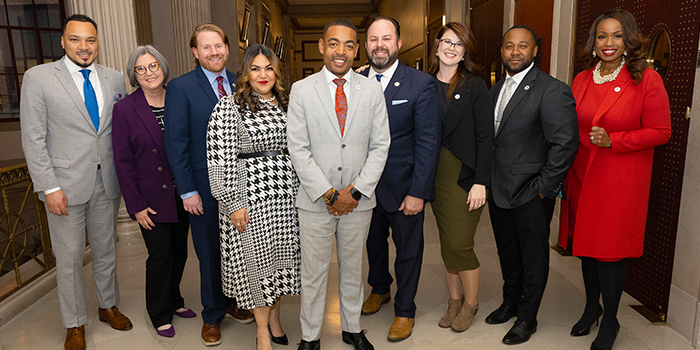As Columbus prepares for the 2025 citywide elections, we find ourselves slightly past the threshold of a historic moment in our city’s political evolution. This election cycle will be the second since the Council transitioned to a district-based representation system—a significant change that holds transformative potential for our City’s governance, our neighborhoods, and our identity-based communities—truly our collective future.
In 2018, Columbus voters approved a charter amendment to restructure the City Council from an at-large system to a hybrid model featuring nine residential districts. This initiative aimed to enhance neighborhood representation and ensure that every part of our city receives focused attention on issues affecting residents and their communities.
The 2025 elections will be pivotal as four council seats will be contested—Districts 1, 3, 4, and 7. And notably, the demographic makeup of the council may change. The City Council is currently made up of 5 men (2 Caucasian, 3 Black) and 4 women (2 Caucasian, 1 Latina/Hispanic, 1 Black). The four open seats are currently filled by 2 Caucasian men, 1 Black man, and 1 Black woman. If a Black woman is not elected to one of the open seats, the physical representation of a Black woman on Council will be missed for the first time since 1990 when Les Wright, the first Black female member, was elected.
It is undeniable that Black women have been central to the fabric of leadership in our city for generations, and their absence from Council would mark a significant shift in public representation. The last Black woman elected to council was Shayla Favor who vacated the District 7 seat to become Franklin County Prosecutor. Shayla’s departure could inspire Black women, and other underrepresented identities, to step up and run to represent any of the open District seats.
The transition to a district-based representation was designed to bring governance closer to the people, ensuring that the diverse perspectives and needs of our communities are represented more equitably at City Hall. By requiring councilmembers to reside within the districts they represent, the system fosters a deeper connection between elected officials and their constituents, promoting accountability and responsiveness.
In Seattle, the shift to district representation has strengthened the bond between residents and their councilmembers, leading to policies that more accurately reflect the unique challenges of each neighborhood. This localized approach has fostered a deeper sense of trust and engagement in the political process.
Similarly, Denver’s ward-based system has empowered neighborhoods to advocate more effectively for resources and infrastructure improvements, ensuring that historically underserved areas receive the attention they deserve. By decentralizing representation, Denver’s governance has become more inclusive, giving a voice to communities that may have been overlooked in an at-large system.
However, district-based systems are not without challenges. In some cities, this structure has led to parochialism, where representatives focus narrowly on their districts at the expense of broader citywide collaboration. This may also happen when political parties monopolize councils. Overcoming this requires a commitment to balancing district-level advocacy, and political party politics, with a shared vision for the entire city. Columbus has the chance to strike this balance by fostering a true culture of collaboration among councilmembers while empowering them to be strong advocates for their direct constituents.
The transition to district-based representation also presents an extraordinary opportunity to increase civic engagement in Columbus. Residents in each district will have the ability to elect a councilmember who comes from their neighborhood, understands their unique concerns, and is truly committed to moving their constituents’ needs forward. The proximity to community leaders has the potential to energize voters and inspire greater participation in the political process, from attending candidate forums to casting ballots on Election Day—maybe even running for office themselves.
But bringing this potential to fruition requires all of us to step up. Residents must educate themselves about the new system, engage with current councilmembers and candidates, make their voices heard, and most importantly they must vote. Community organizations and advocacy groups can play a vital role in demystifying the districting process, ensuring that every voter understands how this change affects them and their community. Meanwhile, candidates and elected officials must prioritize accessibility and transparency, demonstrating their commitment to serving their districts while working collaboratively for the good of all Columbus residents.
As we continue in this new chapter in Columbus’ governance, we must seize the opportunity to build a more inclusive, equitable, and representative city—after all, in 2018 we approved it. The 2025 City Council elections are not just about choosing who will lead our districts—they are about shaping the future of Columbus and the role each of us plays in that journey.
This is our moment to redefine what representation looks like in our city. Your vote will make it count.


